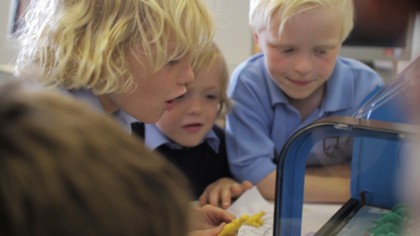'Our dream is to see a Robox in every school, office and home worldwide'
3D printer uses 'Plug and Print' technology
The AutoMaker software is designed so that it only takes three or four clicks to go from a 3D model to the real thing. This quality and ease of use means that Robox will produce the items that you ask of it without the hassle of advanced programming regardless of whether it's being used at work, at school or in the home.
That said, the printer still includes many advanced features which makes it suitable for more technical commercial use if desired.
Material value
TR: What 3D objects is Robox particularly good at making?
CE: Whether users want to create their own designs or follow pre-existing blueprints, there is already a whole range of 3D models available online which are ready for printing straight away, and 3D design is becoming more accessible all the time with services such as TinkerCAD and 123d Design.
In the future, Robox will support a whole range of different heads for performing different functions, allowing it to cut sheet material such as vinyl, paper, leather and card for craft, or printing in clay or silicone for flexible or ceramic parts. One day we dream of the Robox even being able to print using chocolate and other foodstuffs! The HeadLock system means that any new head we develop will be compatible with the existing platform allowing for a whole range of new uses.

Lasting impact
TR: Is 3D printing going to be just a fad or will it have a serious impact on consumers and business?
3D printing technology has been around for years but the presence of a whole raft of patents has so far prevented it being used outside of industry.
Are you a pro? Subscribe to our newsletter
Sign up to the TechRadar Pro newsletter to get all the top news, opinion, features and guidance your business needs to succeed!
Recent years have seen 3D print technology evolve dramatically and we created Robox to make this technology accessible to everyone. Our dream is to eventually see a Robox in every school / college, designer / architects' office and in homes worldwide. By making the technology more accessible we hope that this will help the 3D printing industry to continue to grow.
We believe that in order for society to take advantage of this technology, education is one of the most important sectors – we need our kids to understand and be excited by this technology, creating a new generation of practically-minded engineers, designers and scientists. We need to begin designing things which are best made by 3D printing techniques, rather than adapting mass manufactured designs to be produced in this way.
